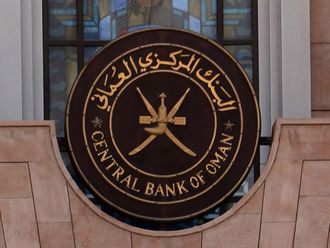
The banking industry is being buffeted with changes. Customers are becoming demanding, newer fintechs are chipping away market share and regulators are being more watchful.
The success of banks, in this complex post-Covid era, is more dependent on three key pillars – Digitization, Data and Design. This is what I call the 3Ds of a successful strategy for financial services.
Players who adopt a well-balanced strategy across these three dimensions are more likely to be the winners of the future.
Digitize or die
Digitization has paved the way for numerous advancements in banking, enhancing convenience for both customers and financial institutions. Firstly, online and mobile banking platforms have become commonplace, enabling customers to conduct a wide range of transactions from the comfort of their homes.
Wealth management apps have democratised investments in stocks, bonds and funds. These digital solutions have revolutionized the way individuals interact with their banks, so much so that bank branches in the UAE have dropped from 823 in 2018 to 571 in 2022.
Secondly, digitization has reduced paperwork and manual processes, streamlining operations and improving efficiency. Automated processes such as loan approvals, account opening, and KYC verification have allowed banks to reduce costs by 15-20 per cent and improve customer engagement scores by 20-30 points.
Moreover, digitization has facilitated the development of innovative financial products and services. Fintech companies have emerged, offering alternative solutions such as peer-to-peer lending, robo-advisory services, and digital wallets.
Start-ups in the UAE like Beehive, Sarwa and Payit have fostered competition, driving traditional banks to embrace digitization and provide more customer-centric solutions. Digitization has also brought greater security measures to banking. Advanced encryption techniques, multi-factor authentication, and real-time fraud detection systems have enhanced the security of financial transactions, reducing the risk of unauthorized access and financial fraud.
Data is the new oil
The second key pillar is data. It plays a crucial role in the success of a bank by enabling informed decision-making, enhancing operational efficiency, mitigating risks, and improving customer experiences.
To start with, banks collect vast amounts of customer data, such as income, transaction history, demographics and preferences. By analyzing this data, banks gain valuable insights into customer behaviour and needs.
Secondly, data analysis plays a vital role in identifying and managing credit risk, market risk and operational risk. Banks can build predictive models to assess the creditworthiness of borrowers, detect fraudulent transactions, or forecast market trends.
This allows banks to make more informed lending decisions, implement risk mitigation strategies, and safeguard against potential losses.
Thirdly, data analytics can significantly improve operational efficiency. By analyzing transactional data and customer interactions, banks can identify bottlenecks, streamline processes, and automate routine tasks.
Finally, data enables banks to offer personalized experiences to customers. Banks can identify individual preferences, anticipate needs, and offer tailored product recommendations.
Here’s ‘Erica’
For example, ‘Erica’, a virtual financial assistant from Bank of America drives personalised, proactive, and predictive conversations with customers based on insights derived from sources such as account balances, past transactions, spend patterns and payment alerts. Erica has successfully handled over 1 billion customer interactions to date.
Design to differentiate
The final pillar in this house of banking is Design. This plays a crucial role in banks today, as it helps shape the overall customer experience and enhances the usability of products and services. Let’s start with the design of the User Experience. UX design focuses on understanding customer needs and preferences to create intuitive interfaces, clear navigation, and efficient interactions across various touchpoints.
Aesthetically pleasing and visually appealing interfaces contribute to a positive perception of a bank’s brand.
Second comes product and process design. Designers play a significant role in shaping products, considering factors such as functionality, usability, and customer needs. They work closely with product managers and engineers to create customer journeys that minimize friction.
Get it in 3 minutes
Liv, the digital lifestyle bank of Emirates NBD, enables paperless account opening within 3 minutes. Wio, the latest digital bank entrant in the UAE, promises frictionless onboarding for SMEs and automated invoicing support, among other things.
The third area is branch design. Although digital channels dominate customer interactions today, physical branches still play a role in the banking experience. Designers work on branch layouts, signage, and interior design to create inviting and customer-friendly environments.
The newly designed FAB branches, for example, optimize customer flows and have incorporated technology to enhance the overall branch experience.
In summary, the strategy of an innovative bank has to embrace all the three dimensions of Digitisation, Data and Design. I believe the future of banking is 3D, and that is a good thing for customers.













